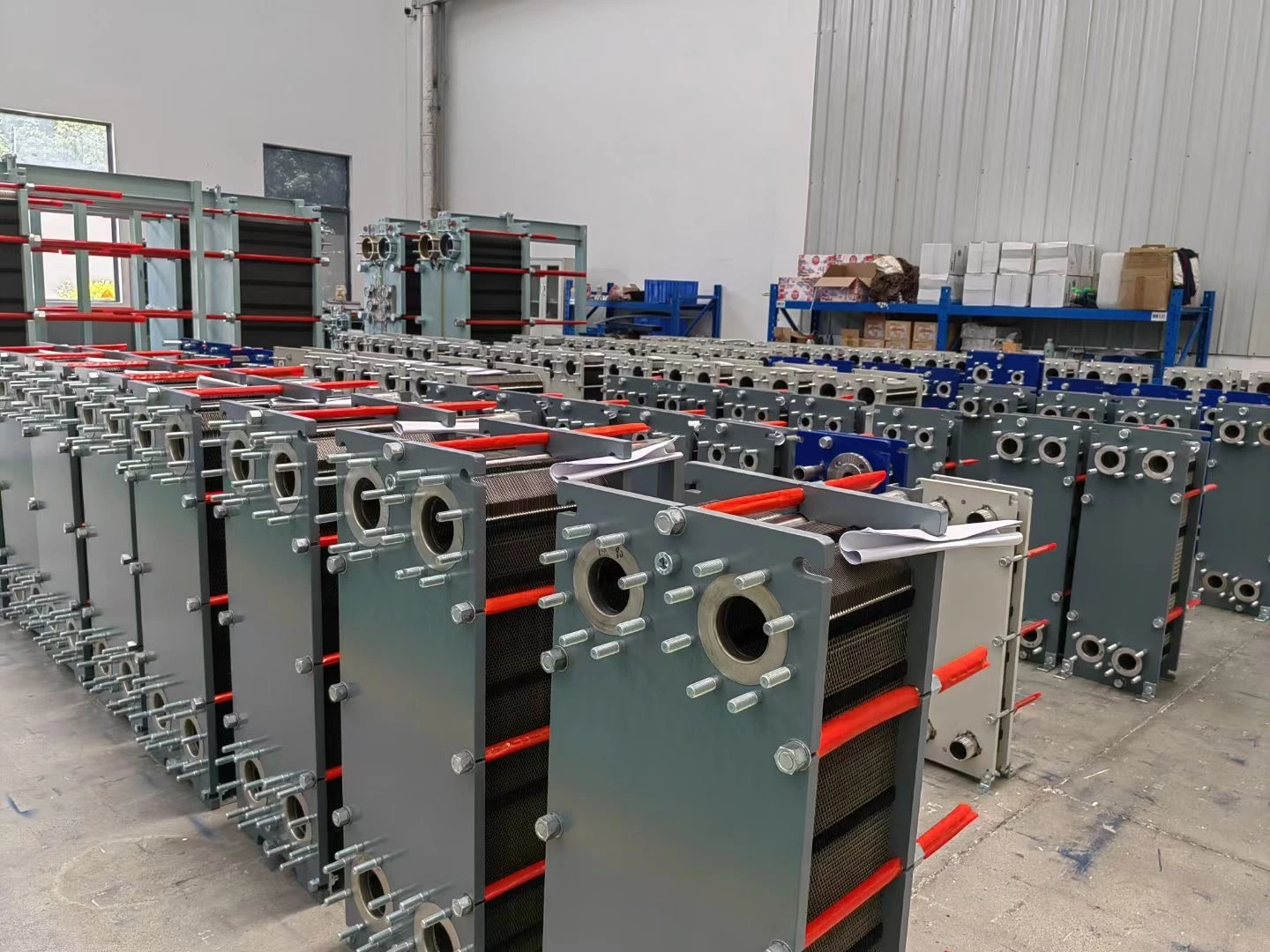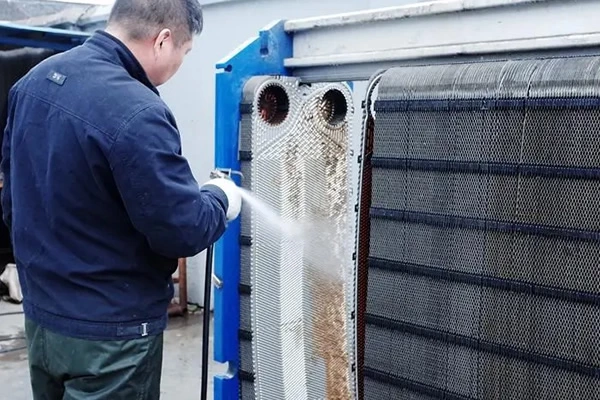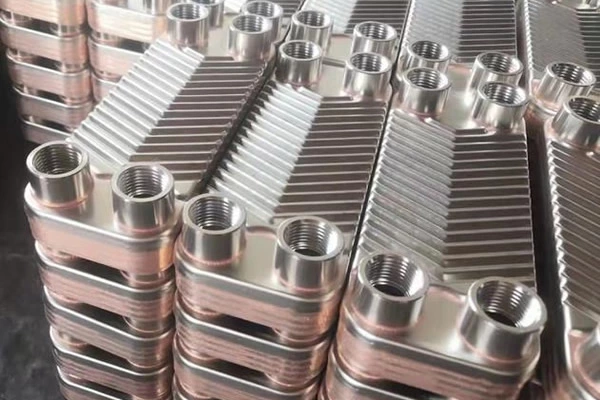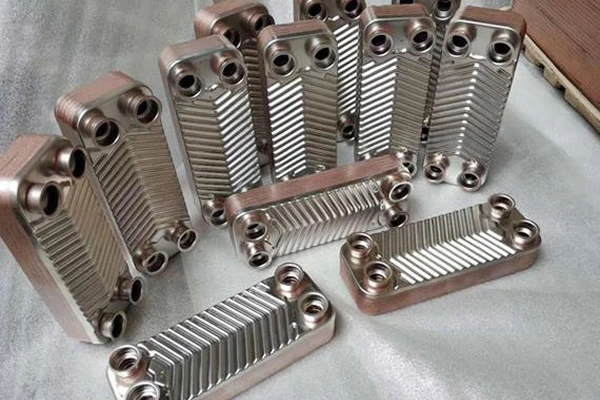Single Flow Process Plate Heat Exchangers

Single flow Process plate heat exchanger is a common type in the plate heat exchanger family, which is widely used in the fields of chemical industry, food, pharmacy, HVAC system and so on with its simple structure, high heat exchange efficiency, easy maintenance and other characteristics. This article will provide you with a detailed introduction to single-flow plate heat exchanger from the aspects of product definition, structural characteristics, working principle, application scenarios and advantages.
1.What is a single flow process plate heat exchanger?
Single-flow process plate heat exchanger is a plate heat exchanger in which hot and cold fluids flow only once in the plate group. It is characterized by hot and cold fluids entering from the two ends of the plate set, and flowing out from the other end after a heat exchange. This design makes the fluid flow path in the equipment is shorter, suitable for lower pressure drop requirements or larger flow conditions.
2.The structure and structural characteristics of single-process plate heat exchanger.
1. Plate group: composed of a series of corrugated metal plates, separated by a sealing gasket between the plates, forming a flow path for hot and cold fluids.
2. Frame: including fixed compression plate and movable compression plate, used to fix the plate group and bear the system pressure.
3. Interface: the inlet and outlet of hot and cold fluids are usually located on the same or opposite sides of the equipment, which is convenient for piping connection.
4. Sealing gasket: made of high temperature and corrosion-resistant materials to ensure that no leakage occurs when the fluid flows in the flow channel.
3.The working principle of single-process plate heat exchanger.
The working principle of single-flow plate heat exchanger is based on the heat exchange of hot and cold fluids through the plate. The working process is as follows:
1. Fluid flow: hot and cold fluids enter from the two ends of the plate set respectively, and flow along the corrugated runner on the surface of the plate.
2. Heat exchange: heat is transferred from high-temperature fluid to low-temperature fluid through the plate to realize heat exchange.
3. Fluid discharge: After a heat exchange, hot and cold fluids flow out from the other end of the plate set respectively.
Due to the single flow design, the flow path of the fluid in the equipment is shorter and the pressure drop is smaller, which is suitable for the working condition with larger flow rate.
4.The application of single-flow plate heat exchanger scene.
Single-flow plate heat exchanger has been widely used in many industries due to its simple structure and high heat transfer efficiency. The following are its main application scenarios:
1. Chemical industry: in chemical production, single-flow plate heat exchanger is often used to cool or heat the reaction medium, to adapt to a variety of corrosive liquids and high temperature and pressure conditions.
2. Food and beverage industry: in the food and beverage processing, single-flow plate heat exchanger is used for heating, cooling or sterilization to ensure product health, safety and quality.
3. Pharmaceutical industry: The pharmaceutical industry requires high hygiene and reliability of the equipment. Single-flow plate heat exchanger can meet the strict health standards, while adapting to a variety of liquid heat transfer needs.
4. HVAC systems: In HVAC systems, single-flow plate heat exchangers are used to cool or heat circulating water to ensure the comfort of the indoor environment.
5. Power industry: In the cooling system of power plants, single-flow plate heat exchanger can be used to cool circulating water, adapting to high-temperature and high-pressure working conditions.
5.The advantages of single-process plate heat exchanger.
1. Simple structure: single-flow design makes the equipment compact, easy to install and maintain.
2. High heat exchange efficiency: the corrugated plate design increases the turbulence effect of the fluid and improves the heat exchange efficiency.
3. Pressure reduction: due to the short flow path of the fluid in the equipment, the pressure drop is small, suitable for larger flow conditions.
4. Strong adaptability: able to adapt to a variety of media and working conditions, including corrosive liquids and high-temperature gases.
5. Easy to maintain: the plate set can be easily disassembled for cleaning and maintenance, prolonging the service life of the equipment.
6. Single-process plate heat exchanger selection and use of precautions
1. Matching conditions: according to the actual working conditions to select the appropriate plate material, sealing gaskets and design parameters to ensure that the equipment can meet the production requirements.
2. Regular maintenance: regular disassembly and cleaning of the plate set to prevent dirt and impurities affect the heat transfer effect.
3. Seal check: Regularly check the condition of the sealing gasket, timely replacement of aging or damaged gaskets to prevent leakage.
4. Installation environment: Ensure that the installation environment meets the requirements of the equipment, to avoid environmental factors leading to a decline in equipment performance.
Welcome To Visit Our Official Website!
If you have any questions, please contact us through the following ways, we will give you the most sincere service!




